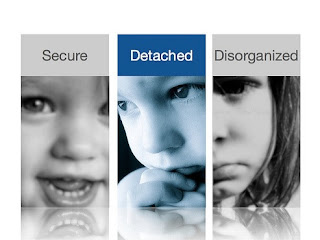Secure Attachment
What happens when the mother reassigns a different motive to the child's cry and decides not to be responsive? A youngster cries for a reason - not to manipulate his parent, not to be mean, or nasty, or to be a "pain in the neck." When, instead of trying to discern what her youngster needs, a mother simply says - "oh, he's just tired," or "he has to deal with sleeping by himself now" - she has given her baby the idea that expressing his inner-self is wrong or bad. A baby is like someone who is quadriplegic. He can't do very much for himself - but that doesn't mean that he isn't thinking and feeling. When the baby cries and his mother responds, the youngster learns to have trust in the world around him and to have trust in himself. When the baby cries and his mother listens, the two join together in a moment of oneness that transcends the separateness, the aloneness, which the baby knows all too well. If the youngster has not...





